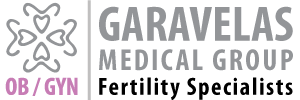Article from Dr. Garavelas Athanasios, Gynecologist Fertility Specialist.
The development and maturation of multiple follicles is crucial for achieving IVF pregnancies. A significant percentage of women, however, who undergo ovarian stimulation as part of assisted reproduction do not adequately respond to standard ovarian stimulation protocols with a significantly reduced number of developing follicles. These women are defined as “poor responders” and usually show reduced oocyte counts, low fertilization rates, poor fetal quality and, consequently, low pregnancy rates.
– Poor ovarian response occurs in 9-24% of women undergoing ovarian stimulation and requires a special therapeutic approach and treatment.
– Until recently, there was virtually no understanding of the definition of “poor ovarian response”, resulting in significant difficulty in assessing the effectiveness of various methods of treating poor ovarian response based on relevant published studies. Recently, in an attempt to establish a universally accepted definition of “poor ovarian response”, it was suggested that: a woman be classified as a “poor responder” if at least two of the three criteria are present:
a) advanced age of the woman (≥ 40 years) or the presence of another risk factor for poor ovarian response;
b) previous poor ovarian
c) abnormal ovarian reserve (Mϋller pore inhibitory hormone (AMH) 0.5-1.1 ng / ml).

Two episodes of poor ovarian response after maximal ovarian stimulation are considered sufficient to characterise a patient as a “poor responder” in the absence of advanced age or abnormal ovarian reserve. Causes of poor ovarian response include a woman’s advanced age, previous ovarian surgery, pelvic adhesions, and increased body mass index.
However, a poor ovarian response can also occur unexpectedly, reflecting premature ovarian aging.Dealing with poor responders remains a challenge in the field of assisted reproduction.The options given to a woman who has a reduced ovarian supply and is a poor respondent are:
- The natural IVF cycle, although it has its difficulties, has been an excellent tool in the hands of an experienced IVF specialist.Ovarian rejuvenation (PRP PLATELET RICH PLASMA) is a new experimental process that helps in the natural production of oocytes in the ovaries.
- It is a worthwhile alternative to egg donation. In addition, it offers hope to women who are in advanced reproductive age and have a reduced number and usually of poor quality eggs.
- Essentially, however, the choice with the highest pregnancy rates is egg donation. It is a simple medical technique but a complex process both emotionally and psychologically for the couple who will decide to make this choice. But the message I have to convey as a scientist and human being is simple and lies in the fact that in no case can the achievement of pregnancy be ruled out, whatever the image of ovarian function.
